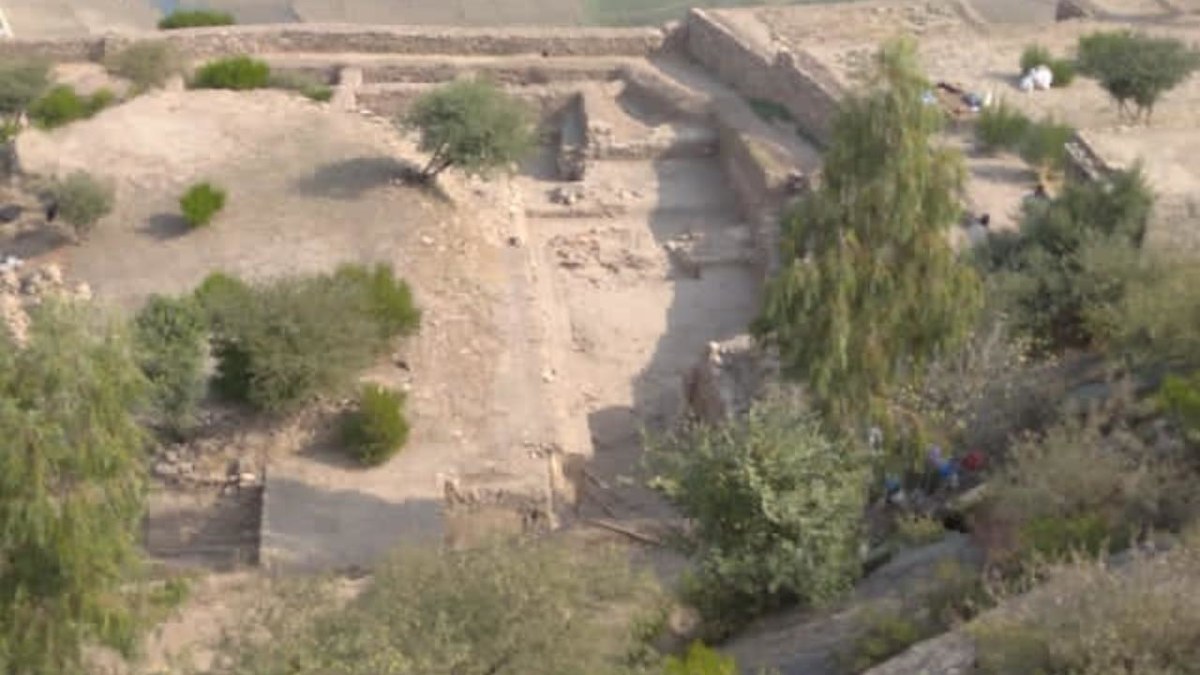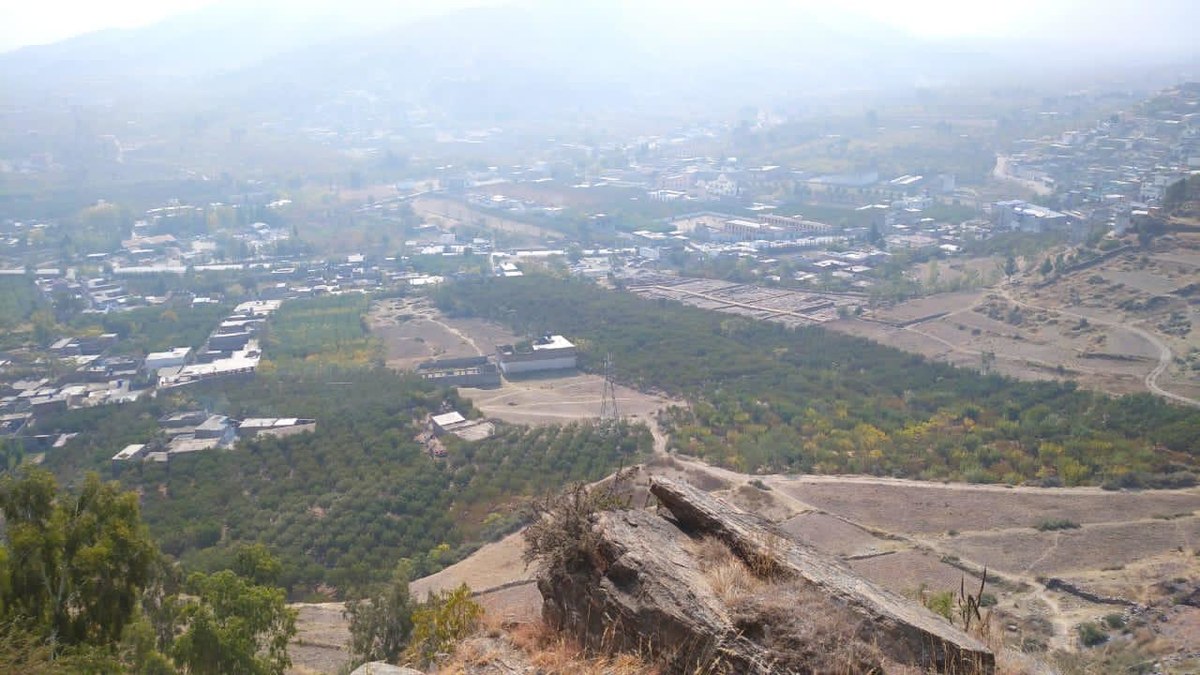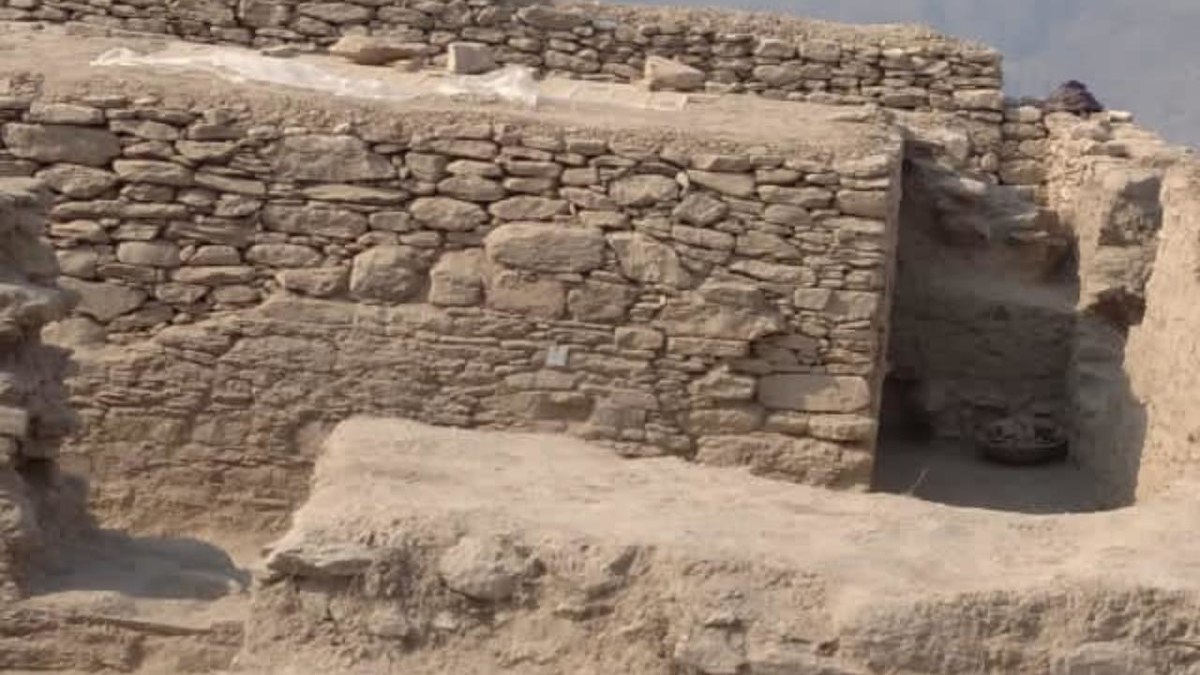PESHAWAR: The archaeology and museums directorate in Pakistan’s northwestern Khyber Pakhtunkhwa province, in collaboration with an Italian archaeological mission, has discovered an ancient Hindu temple in Swat Valley believed to be around 1,100 years old, the region’s archaeologists have said.
In recent years, Pakistan has moved to restore ancient temples and relics in the province as part of an initiative to encourage tourism and project religious harmony in a region roiled for decades by militancy.
The Khyber Pakhtunkhwa region was once the center of Buddhist civilization that took root under the Mauryan king Ashoka 2,300 years ago.
“The temple was discovered almost ten days back, which is believed to have been built by the Hindu Shahi or Hindu dynasty (850-1026 CE) during their rule in Gandhara and Kabul Valley,” Dr. Abdul Samad, director for archaeology and museums in the province, told Arab News. “It is believed the temple is of Lord Vishnu,” he added, referring to one of the principal deities of Hinduism.
He said Barikot Ghundai, a hillside on the outskirts of the scenic Swat Valley where the temple has been discovered, was an important archaeological site dating back to the twelfth century BC till the Islamic period. He said the newly-discovered temple dated back to roughly the ninth or tenth century AD.

In this undated photo, the site of a newly-discovered Hindu temple in Barikot Ghundai in northwestern Khyber Pakhtunkhwa, Pakistan, can be seen. (Photo courtesy: KP Directorate of Archeology and Museums)
Niaz Ali Shah, a regional officer at the KP directorate of archaeology and museums in Malakand region, said excavation work in the Barikot Ghundai area was reinitiated by his directorate in collaboration with an Italian archaeological mission in 2010 after it was marked safe following a Taliban insurgency in the area.

In this undated photo, a view of the village in Barikot Ghundai, a hillside on the outskirts of Swat valley in northwestern Khyber Pakhtunkhwa, Pakistan, where the provincial archeology and museums directorate, in collaboration with an Italian archeological mission, has discovered an ancient Hindu temple believed to be 11,000 years old. (Photo courtesy: KP Directorate of Archeology and Museums)
The excavation has so far revealed what looks like a lookout tower and a water tank most likely used for bathing by followers of Vishnu, Shah added.
Khyber Pakhtunkhwa province is home to Takht-i-Bahi, or ‘Throne of the Water Spring,’ an Indo-Parthian archaeological site of an ancient Buddhist monastery, considered among the most imposing relics of Buddhism in all of Gandhara.

In this undated photo, a view of Barikot Ghundai, a hillside on the outskirts of Swat Valley in northwestern Khyber Pakhtunkhwa, Pakistan, where the provincial archeology and museums directorate, in collaboration with an Italian archeological mission, has discovered an ancient Hindu temple believed to be 11,000 years old. (Photo courtesy: KP Directorate of Archeology and Museums)
In 2017, Pakistan unveiled the remains of a 1,700-year-old sleeping Buddha image. A reflection of the diverse history and culture of the South Asian country, the ancient Buddhist site in Bhamala province was first discovered in 1929. Eighty-eight years on, excavations resumed and the 14-meter-(48-foot)-high Kanjur stone Buddha image was unearthed, with then opposition leader and now Prime Minister Imran Khan presiding over the presentation.

















